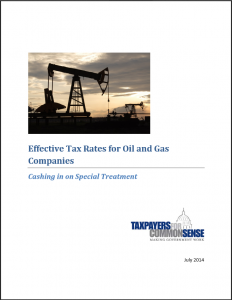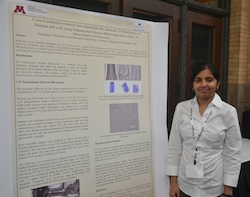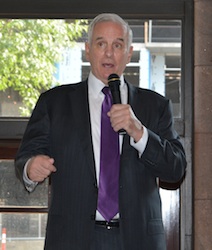 Dyadic International, Inc. has signed a collaboration agreement to commercialize second generation biofuel and bio-based chemical technology with Compagnie Industrielle de la Matière Végétale (CIMV). CIMV’s patented approach of separating the three main components of plant material allows both production of high quality cellulose and hemicellulose, especially well-suited for the enzymatic process, and Biolignin, a pure form of lignin that may be sold commercially as a high value, environmentally friendly alternative to petroleum-derived chemicals. Under the collaboration agreement, Dyadic and CIMV will work together to develop more efficient, fully integrated processes to produce environmentally low impact biofuels and bio-based chemicals.
Dyadic International, Inc. has signed a collaboration agreement to commercialize second generation biofuel and bio-based chemical technology with Compagnie Industrielle de la Matière Végétale (CIMV). CIMV’s patented approach of separating the three main components of plant material allows both production of high quality cellulose and hemicellulose, especially well-suited for the enzymatic process, and Biolignin, a pure form of lignin that may be sold commercially as a high value, environmentally friendly alternative to petroleum-derived chemicals. Under the collaboration agreement, Dyadic and CIMV will work together to develop more efficient, fully integrated processes to produce environmentally low impact biofuels and bio-based chemicals.- The U.S. Department of Agriculture has published a roadmap for America’s farmers and ranchers to measure their greenhouse gas emissions and evaluate opportunities for reducing them. The new Greenhouse Gas Report provides thorough guidelines for understanding how different management practices influence GHG emissions on farms, ranches and forests. By helping landowners better understand their impacts, farmers, ranchers and forest owners will be better equipped to calculate their emissions and account for these impacts through voluntary participation in GHG mitigation or carbon sequestration projects across the country.
- Canadian Solar Inc. has supplied 4 MW of Canadian Solar PV Modules for the Spanish Town Estate Solar project, recently acquired by NRG Energy Inc. The project is located in St. Croix, in the U.S. Virgin Islands and utilizes 14,400 high-efficiency Canadian Solar CS6X-P 305 Polycrystalline PV Modules. Construction of the Spanish Town Estate Solar project began in April of 2014 and is expected to generate enough electricity to power more than 1,500 homes. It is expected to create nearly 100 direct and indirect jobs during construction and to inject a total of approximately $3 million into the local economy.
- The California Energy Commission (CEC) awarded $4.3 million to Linde North America to construct retail hydrogen fueling stations in Northern California. The stations will be located at the Oakland International Airport and on Toyota owned property in San Ramon, California, adjacent to Toyota’s San Francisco Regional Office and Parts Distribution Center. The award is part of $46.6 million funding program the CEC has committed this year to expand the retail hydrogen fueling infrastructure within the state.

Report Shows Oil Companies Paid 11.7% Tax Rate
According to a new report from Taxpayers for Common Sense, oil companies paid only 11.7 percent of the U.S. income in federal taxes over the last five years. This is compared to the statutory 35 percent corporate tax rate paid by other companies.
“This is a perfect example of how the oil industry is allowed to play by a different set of rules than everyone else,” commented Jeremy Funk, communications director with the  nonprofit organization Americans United for Change who supports choice at the pump through biofuels. “They can dodge billions of dollars in taxes, and Washington lets them get away with it. This is the same industry that is now fiercely lobbying the White House for yet another special interest favor: gutting the Renewable Fuel Standard and allowing more foreign oil into the U.S. gasoline supply at the expense of cleaner, cheaper renewable fuels made in America. Isn’t the system rigged enough in Big Oil’s favor without Washington helping them become a monopoly at the pump, too?”
nonprofit organization Americans United for Change who supports choice at the pump through biofuels. “They can dodge billions of dollars in taxes, and Washington lets them get away with it. This is the same industry that is now fiercely lobbying the White House for yet another special interest favor: gutting the Renewable Fuel Standard and allowing more foreign oil into the U.S. gasoline supply at the expense of cleaner, cheaper renewable fuels made in America. Isn’t the system rigged enough in Big Oil’s favor without Washington helping them become a monopoly at the pump, too?”
The country is still waiting the final rules from the Environmental Protection Agency (EPA) for the 2014 Renewable Fuel Standard (RFs) that if passed as proposed, would reduce the amount of domestically produced biofuels at the pump while increase foreign oil. Funk points out that gasoline costs more than renewable fuels such as ethanol, and the EPA proposal would cost Americans millions of dollars at the pump, ‘killing’ American jobs. Funk also said that because the EPA proposal effectively allows oil companies to block access to the marketplace by refusing to install fueling infrastructure for renewable fuels, it will be particularly devastating to America’s emerging advanced biofuel industry.
To achieve such a low current tax rate, oil companies were able to take advantage of special tax breaks and loopholes that allowed them to defer more than $17 billion in taxes they would have otherwise owed, explained Funk. One “small” oil company, Apache, earned $6 billion in profits between 2009 and 2013 but deferred its entire tax bill. Not only did the company avoid paying any taxes, but it actually reaped a tax benefit worth $220 million according to Funk.
The report concludes with a damning indictment of the oil industry’s deceitful rhetoric about its tax obligations:
“Oil and gas companies may pay a lot in income taxes, but it is not to the U.S. government. Indeed, the “current” federal income tax rate of some of the largest oil and gas companies – the amount they actually paid during the last five years – was 11.7 percent. The “smaller” companies included in the study which reported positive earnings only paid 3.7 percent. Many of the tax provisions available to the oil industry are not available to other taxpayers, giving these companies a significant tax advantage. The language the industry uses gives the impression that it pays a high federal income tax rate. The American Petroleum Institute cites an industry-wide effective tax rate of 44.3 percent. In reality, the amount oil and gas companies pay in federal income tax is considerably less than the statutory rate of 35 percent, thanks to the convoluted system of tax provisions allowing them to avoid and defer federal income taxes.”
Students Present Research at Ethanol Conference
Several University of Minnesota students are giving the ethanol industry a preview of their cutting-edge research in biofuels, biochemicals and bioproducts during the 27th Annual Ethanol Conference in Minneapolis. One such student is Sahana Ramanna who is a PhD student who is working on improving the pre-treatment technologies used for biomass, specifically Aspen.
 Ramanna explained that one of the most difficult and energy intensive parts of converting biomass (aka cellulose) to sugar is in the initial phase. Using 3D imaging, similar to the technology used for brain scans, she and her team are able to test “pre-treatment” strategies and see how it affects the structure of the biomass.
Ramanna explained that one of the most difficult and energy intensive parts of converting biomass (aka cellulose) to sugar is in the initial phase. Using 3D imaging, similar to the technology used for brain scans, she and her team are able to test “pre-treatment” strategies and see how it affects the structure of the biomass.
Ultimately, Ramanna said they are looking to increase the amount of biomass that can be converted into biofuels and other biochemicals and products, thus increasing the amount of biofuels. In addition, the processes they are looking at would significantly improve the energy efficiency during this process. Next steps – refining the process for Aspen and then testing it on other forms of biomass.
Listen to Sahana Ramanna discuss her research here: Interview with Sahana Ramanna
Another student I spoke with is just beginning his PhD studies and has spent the last year working on an interesting biofuels project. Joseph Molde works in the BioTechnology Institute and he and his team are working on a process called hydrothernmal carbinization using distillers grains (DDGs), a bi-product of ethanol production.
 What is really neat is the process is producing two new possible co-products: liquid carbon and biochar. The liquid carbon can be used as an organic fertilizer on fields, while the biochar can be used in various applications including biomaterials and biochemicals. Molde said that similar research has been taking place in Europe, but not much has been done with biochar here in the states.
What is really neat is the process is producing two new possible co-products: liquid carbon and biochar. The liquid carbon can be used as an organic fertilizer on fields, while the biochar can be used in various applications including biomaterials and biochemicals. Molde said that similar research has been taking place in Europe, but not much has been done with biochar here in the states.
Molde also noted that the process improves efficiency throughout the production process – just one more way the ethanol industry is working to improve its technology and environmental footprint – while also adding valuable additional co-products to an ethanol plant’s portfolio. He said they are scaling up the technology now and that he hopes to see it in commercial scale application in the next five to 10 years.
Listen to Joseph Molde discuss his research here: Interview with Joseph Molde
View the 27th Annual Ethanol Conference photo album.
Minnesota Gov Mark Dayton Kicks Off 27th ACE Conf
 The 27th Annual Ethanol Conference kicked off last night with some brief remarks from Minnesota Governor Mark Dayton. The American Coalition for Ethanol (ACE) annual event, taking place at the Depot Renaissance Hotel, began with hundreds of ethanol advocates who heard from Governor Dayton that he appreciated ethanol producers, “for what you are doing,” to boost the nation’s energy independence, lower gas prices, and clean the environment.
The 27th Annual Ethanol Conference kicked off last night with some brief remarks from Minnesota Governor Mark Dayton. The American Coalition for Ethanol (ACE) annual event, taking place at the Depot Renaissance Hotel, began with hundreds of ethanol advocates who heard from Governor Dayton that he appreciated ethanol producers, “for what you are doing,” to boost the nation’s energy independence, lower gas prices, and clean the environment.
Governor Dayton noted that ethanol enjoys overwhelming bi-partisan support in the Minnesota legislature “because we know it is good for Minnesota and the nation”. He noted that Minnesota is the nation’s fourth largest ethanol producing state and there is support for higher blends of ethanol, such as E15 and E85. He also advocated that every vehicle should be a flexible fuel vehicle (FFV), capable of burning higher blends of ethanol so consumers can have a choice at the pump.
Check out the 27th Annual Ethanol Conference photo album.
New Leaders for Next Gen. Scientists for Biodiesel
 New leadership for the Next Generation Scientists for Biodiesel have been chosen. This National Biodiesel Board program aims to educate young scientists with factual information about biodiesel.
New leadership for the Next Generation Scientists for Biodiesel have been chosen. This National Biodiesel Board program aims to educate young scientists with factual information about biodiesel.
Selected through a competitive application process, the new co-chairs are:
• James Anderson, Southern Illinois University, a PhD student in Agricultural Science
• Katie Heil, University of Colorado – Boulder, an undergraduate in Electrical Engineering
• Mike Morgan, Utah State University, an undergraduate in Biochemistry
They join senior co-chair Dan Browne, a graduate research assistant in the Dept. of Biochemistry & Biophysics at Texas A&M University. They replace three previous co-chairs who have graduated from their studies.
“By engaging with student scientists, our industry has not only learned about their upcoming research, but has opened new lines of communication with their professors and university researchers,” said Don Scott, NBB’s director of sustainability. “The new co-chairs are passionate, energetic and innovative, and will do a great job taking this program to the next level.”
The program was first launched in 2010 and has led to increased communication and collaboration between the biodiesel industry and colleges and universities involved in biodiesel research.
Sales Up But Revenues Down for Biodiesel’s REG
 Biodiesel behemoth Renewable Energy Group (REG) says while sales of its biomass-based diesel are up, revenues have fallen. The company released its second quarter 2014 financial results, showing REG sold 11 percent more biodiesel than the same time a year earlier. But revenues of $332.9 million are a decrease of 13 percent and an adjusted EBITDA decreased by 86 percent.
Biodiesel behemoth Renewable Energy Group (REG) says while sales of its biomass-based diesel are up, revenues have fallen. The company released its second quarter 2014 financial results, showing REG sold 11 percent more biodiesel than the same time a year earlier. But revenues of $332.9 million are a decrease of 13 percent and an adjusted EBITDA decreased by 86 percent.
“Our second quarter results demonstrate the resilience of our business in the face of challenging market conditions,” said Daniel J. Oh, President and Chief Executive Officer. “We believe the industry has worked through the excess inventory from year-end and we have seen demand increase since the first quarter.”
Oh continued, “During second quarter, REG demonstrated its ability to operate an expanding business while also investing for future growth. On top of ramping up gallons sold 63% from first quarter, we executed a complex series of transactions in order to acquire Syntroleum and Dynamic Fuels. Integration of both are underway and we are excited about the new employees, technology and products added to REG. With these acquisitions, our total assets now exceed $1 billion.”
You can read more details of the report here.
Increasing Ethanol Yield
 One way enzyme technology can help ethanol plants is by yielding more ethanol per bushel of corn.
One way enzyme technology can help ethanol plants is by yielding more ethanol per bushel of corn.
At the recent Corn Utilization and Technology Conference, Nathan Kreel with Novozymes talked about Olexa, a unique enzyme designed for oil recovery. “We developed it mainly to enhance corn oil extraction for the customer, but we are seeing there are a lot of other benefits,” he said. That includes an increase in ethanol yield, better yeast health, and more efficient fermentation.
“The most important thing is that we see back end process improvements with an average of 13% oil increase,” Kreel said. “It’s a simple drop-in product that is added right to the fermentation and you can see improvements right when it’s used.”
Learn more in this interview: Interview with Nathan Kreel, Novozymes
Oxygenate from Ethanol and Corn
 xF Technologies Inc. is an advanced biofuel company that has developed a chemical process to convert corn or biomass plus alcohol (especially ethanol or methanol) into an oxygenate that can be blended with gasoline and diesel.
xF Technologies Inc. is an advanced biofuel company that has developed a chemical process to convert corn or biomass plus alcohol (especially ethanol or methanol) into an oxygenate that can be blended with gasoline and diesel.
 “It’s a completely chemical process – no enzymes, no bacteria, no fermentation,” said Bob Randle of xF Technologies, who spoke at the recent Corn Utilization and Technology Conference. The end products are furoates – from either ethanol, methanol or butanol – that can then be used as oxygenates for fuel transportation to improve mileage, reduce emissions, increase lubricity, and more.
“It’s a completely chemical process – no enzymes, no bacteria, no fermentation,” said Bob Randle of xF Technologies, who spoke at the recent Corn Utilization and Technology Conference. The end products are furoates – from either ethanol, methanol or butanol – that can then be used as oxygenates for fuel transportation to improve mileage, reduce emissions, increase lubricity, and more.
Randle says the technology offers co-location and add-on opportunities for ethanol and corn wet milling plants. “Because our primary feedstocks are corn and ethanol, or biomass and ethanol,” he said. “We can also be co-located with a cellulosic ethanol plant as well.”
Learn more in this interview: Interview with Bob Randle, xF Technologies
PERC Consolidates Propane Info on One Website
 Users of propane will now be able to find information on the clean fuel consolidated on one website. The Propane Education & Research Council (PERC) announced it is combining information that used to be available on several sites, including autogasusa.org, agpropane.com, poweredbypropane.com, and usepropane.com, into one place Propane.com, where customers can find information on propane’s many uses in transportation, commercial landscaping, agriculture, residential, and industrial markets.
Users of propane will now be able to find information on the clean fuel consolidated on one website. The Propane Education & Research Council (PERC) announced it is combining information that used to be available on several sites, including autogasusa.org, agpropane.com, poweredbypropane.com, and usepropane.com, into one place Propane.com, where customers can find information on propane’s many uses in transportation, commercial landscaping, agriculture, residential, and industrial markets.
PERC hopes the consolidated web presence will promote a “one-fuel solution” by encouraging business and residential customers currently using or considering propane in one application to explore new fuel-efficient equipment for other uses as well.
“Propane.com gives our industry a chance to showcase the versatility of propane, and the economic and environmental benefits of using this American-made fuel across top performing markets,” says Roy Willis, president and CEO of PERC. “The consolidation also gives propane customers the opportunity to realize all the technologies available for their home, fleet, or business.”
The previous sites managed by PERC still exist but redirect to Propane.com. Customers can also use the “Find a Propane Retailer” application on the site to locate their nearest retailer by zip code and services provided.
Pacific Ethanol Gets $3 Mil Grant for Sorghum
 California-based Pacific Ethanol, Inc. received a $3 million grant from the California Energy Commission to develop sorghum as a feedstock for ethanol. This company news release says it will work with Chromatin, Inc., CSU Fresno’s Center for Irrigation Technology and the Kearney Agricultural Research and Extension Center.
California-based Pacific Ethanol, Inc. received a $3 million grant from the California Energy Commission to develop sorghum as a feedstock for ethanol. This company news release says it will work with Chromatin, Inc., CSU Fresno’s Center for Irrigation Technology and the Kearney Agricultural Research and Extension Center.
This undertaking also includes the California In-State Sorghum Program to support a lasting expansion in California’s ability to produce low-carbon ethanol from in-state feedstock that meets both the renewable fuel and greenhouse gas reduction goals stipulated under the federal Renewable Fuel Standard and California’s Low-Carbon Fuel Standard.
Neil Koehler, the company’s president and CEO, stated: “We are honored to receive this important grant, which supports Pacific Ethanol’s collaboration with California Agriculture and the other ethanol producers in California toward the long-term development of sorghum feedstock for advanced biofuel production at both our Madera and Stockton California facilities.”
Pacific Ethanol is the leading producer and marketer of low-carbon renewable fuels in the Western United States with four ethanol production facilities capable of producing a total of 200 million gallons each year.
